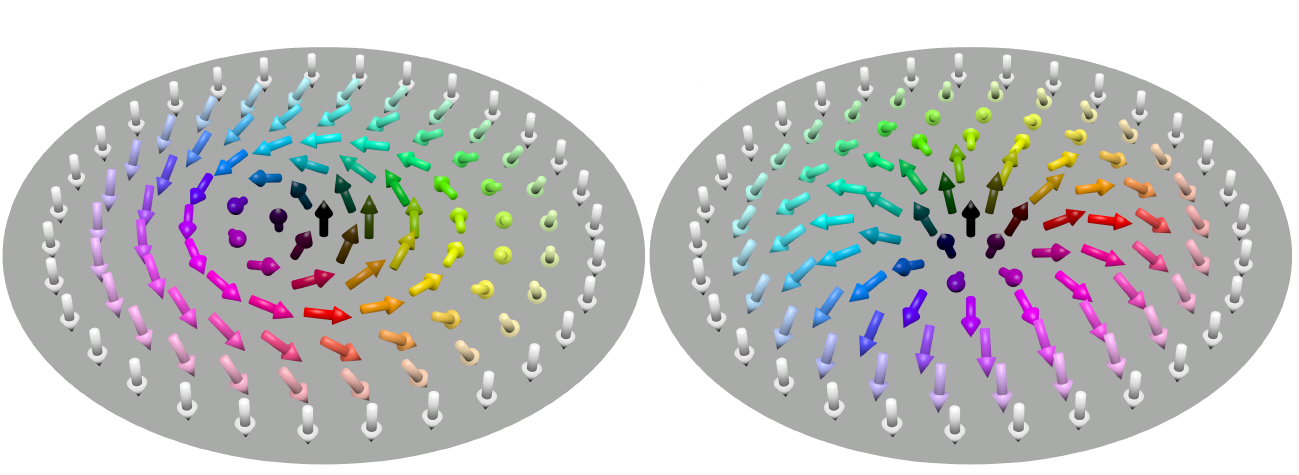Collective states, which carry quantized robust properties in the ground state, are referred to as “driven by topology” and these are of special interest for a number of reasons. These states can be classified by a topological winding number that itself can be used as an information carrier that entails additionally novel properties, such as enhanced stability of the states.
Topological states can exist in real-space, where laterally extended systems can host collective spin textures that can be topologically stabilized. These textures often exhibit quasi-particle behaviour and are thus a prime example of emergence, as the quasi-particle properties do not trivially follow from the individual microscopic order parameter properties. There are different physical implementations resulting in different order parameters with the most conspicuous being ferroic systems with local magnetization or electrical polarization and nematic crystals spanning hard and soft matter.
In reciprocal space, electronic ground states are grouped into different equivalence classes according to their topologies, and this field has developed into an exciting and rapidly developing area of physics with prospects for great applications in technology. The different topological classes here, whose set is rapidly expanding in recent years, and which include e.g. topological insulators together with Chern insulators and topological semimetals, as well as more exotic phases such as axion insulators and higher-order topological insulators, naturally lead to distinctly different response properties such as transport properties or magneto-electric response leading to applications (Mottronics).
While many of the static properties of both real-space and reciprocal space topological states have been intensively investigated, the dynamic properties are just starting to be explored. With ultra-fast excitations, transient topological changes can be induced and periodic excitations generate Floquet dynamics. In this focus group we will educate graduate students working synergetically on topology and dynamics.

